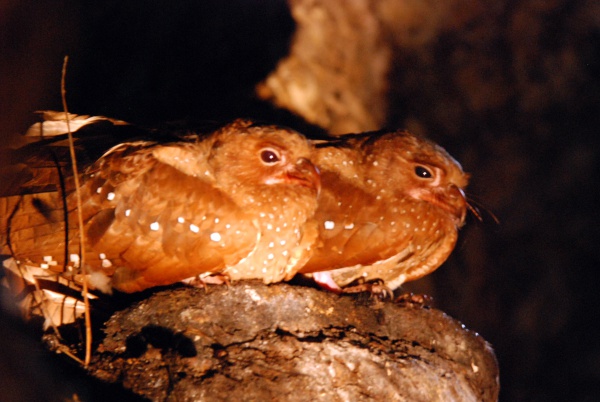Facts About Oilbird
The oilbird, also known as the guácharo, is an exceptionally distinctive bird found in the northern regions of South America, including Trinidad. These fascinating birds belong to the genus *Steatornis* and the family Steatornithidae. They thrive in colonies within caves and are nocturnal, primarily feeding on fruits. Notably, oilbirds are the only nocturnal, flying, frugivorous birds in the world, employing echolocation, much like bats, to navigate in the dark. They produce high-pitched clicking sounds for echolocation, which humans can hear.
Taxonomically, oilbirds differ from nightjars as they subsist on fruit rather than insects. Their scientific name, *Steatornis caripensis*, reflects their habitat in Caripe and their unusually fat chicks. The names "guácharo" and "tayo" originate from indigenous languages. Fossil records indicate that oilbirds were once more widespread. These birds are quite large and possess specialized bills and unique adaptations for flight and vision, including their ability to echolocate in low light conditions.
Oilbirds inhabit several South American countries and require specific habitats with caves and fruiting trees for nesting and roosting. The Guácharo Cave in Venezuela is a significant site for studying these birds. They migrate seasonally and can sometimes be found in neighboring countries. Oilbirds are nocturnal, roosting in caves and trees during the day and becoming highly active at night.
Oilbirds lay their eggs in breeding colonies inside caves, often on piles of droppings. To protect these unique birds, conservation initiatives have led to the establishment of national parks and monuments. Although their population is declining, oilbirds are currently listed as "Least Concern" on the IUCN Red List.

 Venezuela
Venezuela